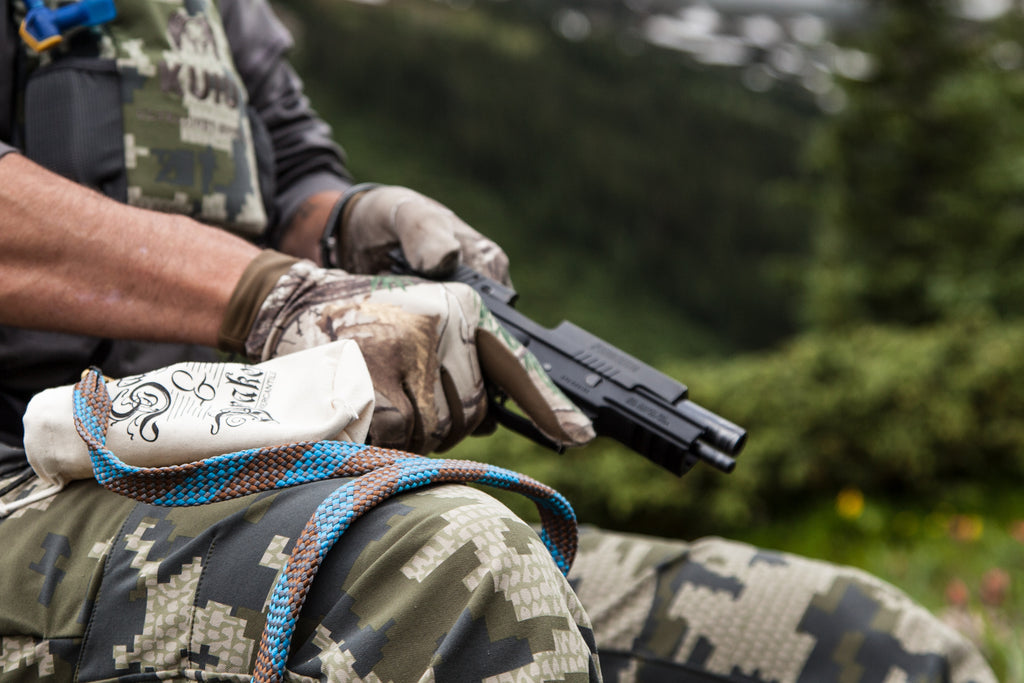Caliber vs MM

We wanted to clear up some of the confusion as to which caliber and mm to use for which types of guns. So we went straight to the expert. John McAdams over at The Big Game Hunting Blog did us a huge favor by clarifying some of the general misconceptions on converting caliber to mm and vice versa.

HOW TO CONVERT CALIBER TO MM (AND VICE VERSA)
Caliber is the approximate internal diameter of the barrel on a particular firearm or the diameter of a bullet and is usually expressed in inches or millimeters. In addition to using different units of measurement, different countries sometimes use different methods of measuring caliber. Because of these factors, deciphering the actual diameter of a bullet or the bore size of a firearm can be bewildering.
Cartridge sizes are described using either the metric (millimeter) or imperial (inch) systems. For instance, the 5.56x45mm Remington, 6.5 Creedmoor, 6.5 PRC , 7mm Remington Magnum, and 7mm PRC cartridges use the metric system of measurement while the .243 Winchester, .308 Winchester, and .458 Lott all use the imperial system.
However, I’m attempting to clear up some of the confusion in this article. Read on to find out exactly how to convert caliber to mm.
Switching between the metric (millimeters) and imperial (inches) systems of measurement is relatively straightforward. There are 10 millimeters (mm) in 1 centimeter (cm) and 2.54 centimeters in 1 inch (in). Therefore, multiply a bullet or bore caliber given in inches by 25.4 in order to convert it to millimeters. The opposite is also true: divide a given caliber expressed in millimeters by 25.4 in order to convert it to inches.
For example, .30″ and 7.62mm are equivalent (.3 multiplied by 25.4 is 7.62).
If you are looking for an approximation of the bore size or bullet diameter so that you buy the appropriate sized gun cleaning supplies, then that is all you need to know. However, if you want more specific details, then you’ll need to dig a little deeper.
Unfortunately, it seems like the deeper you dig, the more complicated and confusing things seem to get. For example, a rifle chambered in .30-06 Springfield (7.62x63mm) has a .30 caliber (7.62mm) bore. However, it shoots .308″ (7.82mm) bullets.
Why the difference?
The caliber of a rifled barrel is measured one of two ways: either by measuring the distance between opposing lands (high points in the rifling) or opposing grooves (low points in the rifling) in the barrel. The .30-06 Springfield is an American designed cartridge and most (but not all) cartridges originating in the United States use groove measurements (which are larger than land measurements) when measuring bullet diameter. So, even though the bore of the rifle (measured across the lands) is .30″, the actual bullet diameter is .308″ because the bullet must closely match the groove diameter (.308″ in a .30-06) in order to form a good seal in the barrel.
To make things even more confusing, most cartridges that were designed in other countries use land measurements. Take the 7.62x39mm cartridge used by the AK-47 as an example. At first glance, this cartridge would appear to use a bullet with the same diameter as the .30-06 Springfield since they are both 7.62mm cartridges.
However, the 7.62x39mm cartridge (which was designed in the Soviet Union), measures bullet diameter using land measurements instead of groove measurements. Because of this, the groove measurement (and the actual diameter of the bullet) is .312″ (7.92mm) instead of .308″ (7.62mm), a difference of .004″.
For some applications, such as purchasing a bore snake for your gun cleaning kit, that difference is not significant at all.
For the purposes of buying the right sized bore snake, there is no practical difference between the 303 British vs 308 vs 30-06 Springfield and similar sized cartridges. This is because .30 caliber bore snakes are manufactured and sold to fit a wide range of bore sizes that encompasses the .308, .303 British, and 7.62x39mm cartridges (among others).
However, .004″ is a significant difference when it comes to actually shooting a bullet.
While it may seem obvious, the way to avoid problems with improperly sized bullets is to shoot the right ammunition in your guns. If you’re hand loading, you should use a reputable reloading manual to ensure you’re 100% certain you’re using the right sized bullet when hand loading for a particular cartridge.
Learn more about some of our other products by visiting the link below.
Sage & Braker Gun Cleaning Mat: The Only Gun Mat You’ll Ever Need
Read more from John McAdams at The Big Game Hunting Blog and subscribe to his show: the Big Game Hunting Podcast
